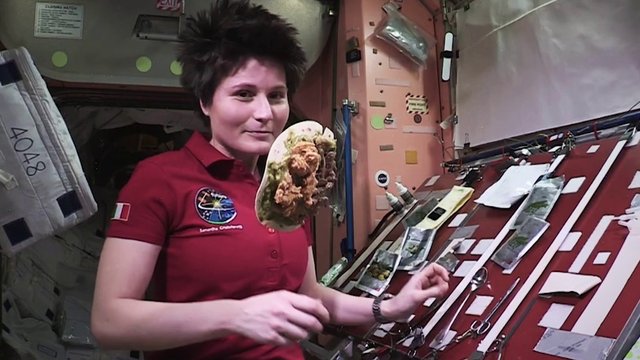 Astronaut Cristoforetti: Set it and forget it and it floats away
Astronaut Cristoforetti: Set it and forget it and it floats away
Nov 28, 2018
ARLINGTON, VA -- After traveling 301 million miles and seven months through space, the National Aeronautics and Space Administration (NASA) Insight mission landed on Mars on Monday. Insight is the ninth successful NASA mission to the surface of Mars, and will provide scientists with valuable information about the structure of the planet’s deep interior as it sends photographs and data back to Earth.
Mars may be dry and barren for now, devoid of the kind of water and soil rice needs to grow, but space agencies around the world have been studying the role rice might play in future space travel as rice has been around since the early days of space exploration.
During the Apollo 11 mission in 1969 when man first walked on the moon, astronauts Neil Armstrong, Buzz Aldrin, and Michael Collins ate freeze-dried chicken and rice specially designed by scientists and engineers to survive space travel. The National Air and Space Museum in Washington, DC, still possesses an original package of chicken and rice from this momentous mission, and though it looks a little worse for wear, it’s an important reminder of rice’s contribution to the space race.
The story of rice in space didn’t end with the moon. Astronauts aboard the International Space Station (ISS) still enjoy the simple pleasure of a zero-gravity meal made with vacuum-packed rice, though other ingredients are sometimes necessary to keep the grains from floating away.
In 2015, European Space Agency (ESA) astronaut Samantha Cristoforetti demonstrated one of her favorite recipes to a YouTube audience while stationed on the ISS, assembling tarragon chicken with mushrooms and brown rice into a tortilla like a futuristic Julia Child.
By the looks of it, the science of space food has come a long way since the days of Apollo 11, but it’s clear that rice is still as much of an essential nutritional staple up there as it is down here.
After successfully growing edible peas, dwarf wheat, and leafy greens in 2014, the ISS moved on to rice and tomatoes, and can now successfully grow rice in a zero-gravity, experimental environment on the space station. In 2016, Chinese astronauts on the Tiangong space station grew rice to study how plants grow without an Earth-based cycle. And NASA has conducted experiments on how microgravity affects the growth of rice plants, determining that while it weakens the plant’s cell walls, it does not inhibit growth.
These rice experiments are essential to scientists in determining how astronauts might feed themselves during long-term space missions in the future.
It may seem like science fiction fantasy to imagine rice fields on space stations orbiting the Earth, or rice crops being harvested on other planets, but humans and rice have been inextricably entwined for 13,000 years, and rice’s role in space exploration signifies that it’s as much a part of our future as our past. Historically, it’s clear that wherever humans go, rice goes – even if that means leaving Earth.